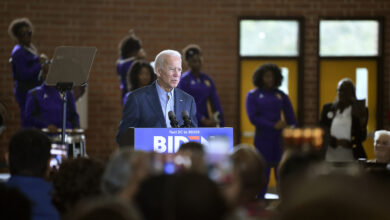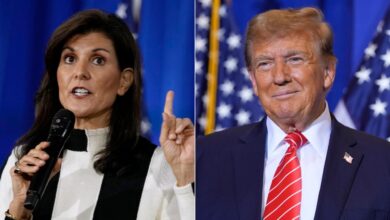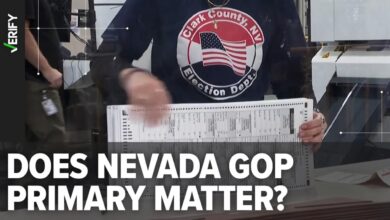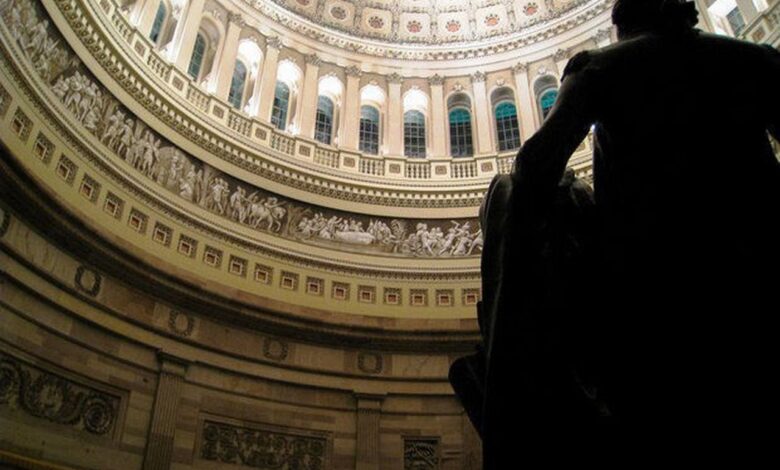
America Politics Cynical & Dysfunctional
America politics cynical dysfunctional is a pervasive issue, deeply rooted in our nation’s history. From the founding fathers to today’s political landscape, a pattern of division, mistrust, and seemingly insurmountable gridlock has taken hold. This exploration delves into the historical context, the current polarization, the flaws in our political processes, and the resulting public perception of cynicism and dysfunction.
This blog post examines the complex interplay of historical events, ideological divisions, and institutional structures that have contributed to the current state of American politics. We’ll also explore the role of media and public perception in shaping this narrative and consider potential solutions for reform.
Historical Context of American Politics
American politics, from its inception, has been a complex interplay of idealism and pragmatism, cooperation and conflict. The nation’s founding fathers envisioned a republic built on principles of liberty and justice, yet the very nature of power and the diversity of interests within the country have created a persistent tension between these ideals and the realities of political life.
This tension, manifesting as periods of cooperation and polarization, has shaped the political landscape and continues to influence the present day.The early republic saw both moments of unity and deep divisions, particularly over issues like slavery and states’ rights. These fundamental disagreements, though often disguised by the rhetoric of national unity, have recurred throughout American history, leaving a legacy of political dysfunction.
The evolution of these issues, from the Civil War to the modern era, reveals a continuous struggle to reconcile competing interests and visions of the nation’s future.
Evolution of Political Dysfunction
The historical evolution of American politics demonstrates a cyclical pattern of periods of cooperation and polarization. The founding era, marked by the struggle to create a unified nation, was followed by periods of intense sectionalism and conflict. The Civil War, for example, was a dramatic illustration of the deep divisions that could arise from fundamental disagreements on issues like slavery.
Later, the Progressive Era, while promoting reforms, also witnessed intense political battles over social and economic issues. The 20th century saw further shifts in political discourse, with periods of relative cooperation punctuated by moments of deep polarization. These fluctuations reflect the ongoing struggle to balance individual liberties with the common good, and to reconcile the diverse interests within American society.
Key Events and Figures
Significant political events and influential figures have profoundly shaped the perceived cynicism and dysfunction in American politics. The rise of political parties, the expansion of suffrage, and the emergence of powerful interest groups have all contributed to the complexity of the political landscape. The role of prominent figures like Andrew Jackson, Abraham Lincoln, and Franklin D. Roosevelt, each with their own unique approaches to leadership and governance, has left an indelible mark on the political discourse.
Their actions and policies often generated both support and opposition, further complicating the political process. Furthermore, the emergence of mass media and social media has altered the nature of political communication and debate, often exacerbating existing divisions and contributing to a sense of political cynicism.
Comparison of Historical Periods
Comparing different historical periods reveals varying degrees of political polarization and cooperation. The early republic, for instance, saw a relatively unified front in the face of establishing a new nation. However, this unity was often fragile and easily fractured by disagreements on critical issues. In contrast, the 20th century saw periods of both intense polarization and moments of bipartisan cooperation, such as the New Deal era.
American politics feels incredibly cynical and dysfunctional these days. It’s exhausting to watch the constant gridlock and seemingly endless bickering. The whole situation reminds me of the complex and often confusing rules surrounding naming conventions, like the intricacies of apellido bebe madre padre. It’s a similar sort of tangled web of rules and traditions that, frankly, makes the entire political process seem utterly baffling.
Ultimately, the dysfunction in American politics feels overwhelming.
These periods of cooperation and division underscore the dynamic nature of American politics and the ever-present tension between consensus and conflict.
Impact of Social and Economic Shifts
Significant social and economic shifts have undeniably impacted political discourse and behavior. The Civil Rights Movement, the women’s suffrage movement, and the rise of the modern environmental movement, among others, have all forced a re-evaluation of societal values and priorities. These shifts have challenged existing power structures and created new political fault lines. Economic crises, such as the Great Depression, have also had a profound impact on political attitudes and the role of government.
Honestly, American politics feels so cynical and dysfunctional these days. It’s exhausting to follow, and frankly, it’s hard to see any real progress. But then I saw that the Pittsburgh Steelers have hired Arthur Smith as their offensive coordinator, arthur smith hired steelers offensive coordinator , which made me wonder if maybe there’s a glimmer of hope outside the political sphere.
Still, the underlying cynicism of American politics continues to permeate everything, even the football world, right?
20th Century Political Events and Public Trust
| Year | Event | Public Response (Perceived Impact on Trust) |
|---|---|---|
| 1929 | Stock Market Crash | Sharp decline in public trust in the economic system, leading to calls for government intervention. |
| 1930s | Great Depression | Mixed response. While initial trust in government declined due to perceived inaction, the New Deal increased trust in government’s role in economic recovery. |
| 1960s | Civil Rights Movement | Increased public awareness of racial inequality and discrimination, leading to both hope for change and frustration with the pace of progress. |
| 1970s | Vietnam War | Erosion of public trust in government due to the perceived dishonesty and failures in the handling of the war. |
| 1990s | Rise of Newt Gingrich and the Republican Revolution | Polarization increased; public trust in government experienced mixed results. |
Political Polarization and Ideological Divisions
The current state of American politics is characterized by a deep and pervasive political polarization. This division extends beyond mere policy disagreements, often manifesting as animosity and distrust between individuals holding opposing viewpoints. Understanding the factors contributing to this polarization, the role of media in shaping public perception, and the core tenets of different political ideologies is crucial to comprehending the challenges facing the nation.The chasm between the political left and right has widened significantly in recent decades.
This increasing divide is a complex phenomenon, with various contributing factors including evolving societal values, economic anxieties, and the rise of identity politics. These factors, in turn, are often intertwined and mutually reinforcing, making it challenging to isolate the single most significant contributor.
Contributing Factors to Political Polarization
Several interconnected factors contribute to the growing polarization in American politics. Economic inequality, coupled with anxieties about the future, creates a fertile ground for resentment and distrust. Changing demographics and social values, along with the rise of identity politics, have led to differing interpretations of social issues. Furthermore, the influence of money in politics, through lobbying and campaign financing, can distort the political process, potentially hindering the representation of the common good.
The Role of Media and Social Media
The modern media landscape, including both traditional news outlets and social media platforms, plays a significant role in shaping public opinion and amplifying existing divisions. The proliferation of readily available information, coupled with the ease of sharing and disseminating opinions online, has led to a fragmented media environment. Algorithms on social media platforms often curate content based on user preferences, creating echo chambers that reinforce existing biases and limit exposure to alternative viewpoints.
This phenomenon, known as filter bubbles, can contribute to the reinforcement of partisan divides.
Comparison of Political Ideologies
Different political ideologies offer distinct approaches to governance, often based on varying interpretations of human nature, the role of government, and the ideal structure of society. Understanding these contrasting viewpoints is essential for navigating the complexities of American political discourse.
Political Ideologies and Core Beliefs
| Ideology | Key Beliefs | Historical Examples |
|---|---|---|
| Liberalism | Generally emphasizes individual rights, social justice, and government intervention to address societal problems. Promotes equality and social programs. | Franklin D. Roosevelt’s New Deal, the Civil Rights Movement, the expansion of social safety nets. |
| Conservatism | Generally emphasizes individual liberty, limited government intervention, and traditional values. Focuses on free markets and personal responsibility. | Ronald Reagan’s tax cuts and deregulation policies, the Tea Party movement, emphasis on fiscal conservatism. |
| Socialism | Generally advocates for collective ownership of the means of production, social equality, and significant government regulation of the economy. Often emphasizes worker rights and social welfare. | The Scandinavian model, historical socialist movements in Europe and Latin America. |
| Libertarianism | Generally emphasizes individual liberty and minimal government intervention in all aspects of life. Advocates for free markets, limited regulation, and individual responsibility. | Early American advocates for limited government, various modern libertarian political movements. |
Sources of Conflict Between Opposing Political Viewpoints
Disagreements often stem from differing interpretations of fundamental societal values and priorities. Conflicts over issues such as economic inequality, social justice, and the role of government in regulating the economy frequently lead to heated debates and political divisions.
Political Processes and Institutions
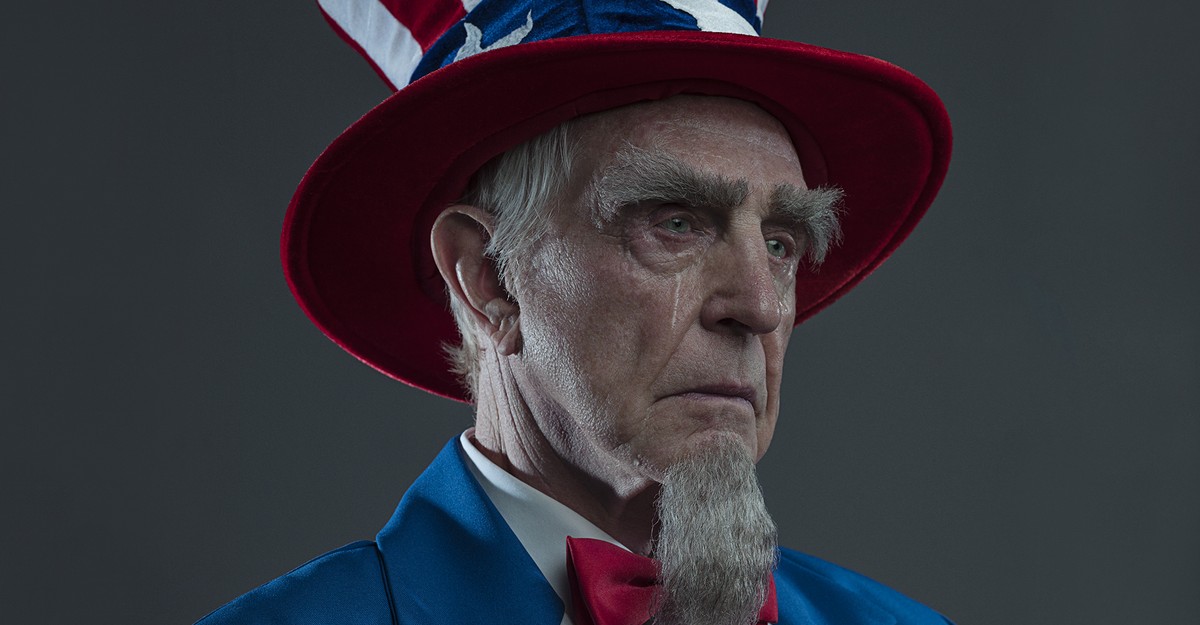
The intricate web of American political processes and institutions, while designed to represent the will of the people, often feels cumbersome and inefficient. This perceived dysfunction stems from a confluence of factors, including the complex separation of powers, the influence of special interests, and the inherent difficulties of navigating a deeply polarized political landscape. These structural features, while intended to safeguard against tyranny, sometimes contribute to gridlock and an inability to effectively address pressing societal needs.The American system of government, with its checks and balances, is often praised for its robustness.
American politics feels so cynical and dysfunctional sometimes, doesn’t it? It’s easy to get caught up in the negativity, but then you consider stories like the tragic tale of lovers in Auschwitz, Keren Blankfeld and József Debreczeni, found in a cold crematorium here. It’s a stark reminder of the human cost of political turmoil and how easily things can spiral into darkness.
And then, you’re back to the familiar feeling of frustration with American politics, wondering if things will ever improve.
However, this very structure can also hinder progress. The tension between the executive, legislative, and judicial branches, while intended to prevent abuses of power, can frequently lead to stalemate and a sense of political paralysis. This can be particularly evident in situations requiring swift action, such as during economic crises or national security threats.
American politics feels so cynical and dysfunctional sometimes, doesn’t it? It’s hard to imagine a more effective approach to urban development than what’s happening in China’s Hefei EV city economy. Looking at the successes of places like china hefei ev city economy makes you wonder if maybe a little less partisan bickering and a little more forward-thinking could help us in the States.
Ultimately, though, we still have a long way to go in America to overcome our political gridlock.
The Separation of Powers and its Implications
The system of checks and balances, designed to prevent tyranny, sometimes creates gridlock. The division of power among the three branches – executive, legislative, and judicial – can lead to disagreements and delays in policy implementation. For example, legislative proposals often face significant hurdles in the form of executive vetoes or judicial challenges, thereby hindering progress on critical issues.
American politics can feel incredibly cynical and dysfunctional sometimes, right? It’s hard to shake the feeling that things are just broken. But then you see stories like the one about stars Harley Johnston, Oettinger, and Benn, stars Harley Johnston, Oettinger, and Benn , and it makes you wonder if there’s more to the story than meets the eye.
Maybe there are still pockets of hope, even in the midst of the political mess. Ultimately, though, the whole thing still feels pretty cynical and dysfunctional.
The interplay of these branches, while essential, can often contribute to the perception of political dysfunction.
The Role of Special Interests and Lobbying
Special interest groups and powerful lobbying organizations play a significant role in shaping policy decisions. These groups, often representing specific industries or segments of the population, possess substantial resources to influence elected officials and advocate for their agendas. This influence can sometimes outweigh the broader public interest, leading to policies that benefit a select few rather than the general population.
Examples include the influence of pharmaceutical companies on drug pricing or the lobbying efforts of the fossil fuel industry on climate change policies. This imbalance of power can create a perception of systemic corruption or inequity.
The Legislative Process and Gridlock
The legislative process in the United States, with its bicameral structure and complex rules, can be remarkably slow and inefficient. The need for compromise between the House and Senate, and often between the two major political parties, frequently results in gridlock and an inability to enact meaningful legislation. A notable example is the difficulty in passing comprehensive healthcare legislation, which often becomes entangled in partisan debates and procedural obstacles.
The prioritization of political maneuvering over substantive policy discussions can further exacerbate the problem.
Comparison of Legislative Processes (Table)
| Feature | US Legislative Process | Example: UK Legislative Process | Potential Sources of Dysfunction |
|---|---|---|---|
| Bicameralism | Yes (House and Senate) | Yes (House of Commons and House of Lords) | Potential for delays and disagreements between chambers. |
| Party Discipline | Generally less disciplined than some other democracies | Generally more disciplined | Difficulty in achieving bipartisan consensus. |
| Lobbying Influence | High | High | Potential for special interests to unduly influence policy. |
| Filibuster/Cloture | Senate only | Limited | Significant delays and roadblocks in legislation. |
| Presidential Veto Power | High | Limited | Can block legislation even if passed by Congress. |
The table above highlights key differences in legislative processes, emphasizing how different structures can lead to varying degrees of efficiency and effectiveness. The unique characteristics of the US system, including its bicameral nature and the role of the filibuster, are often cited as contributing factors to the perceived gridlock.
Public Perception and Trust: America Politics Cynical Dysfunctional
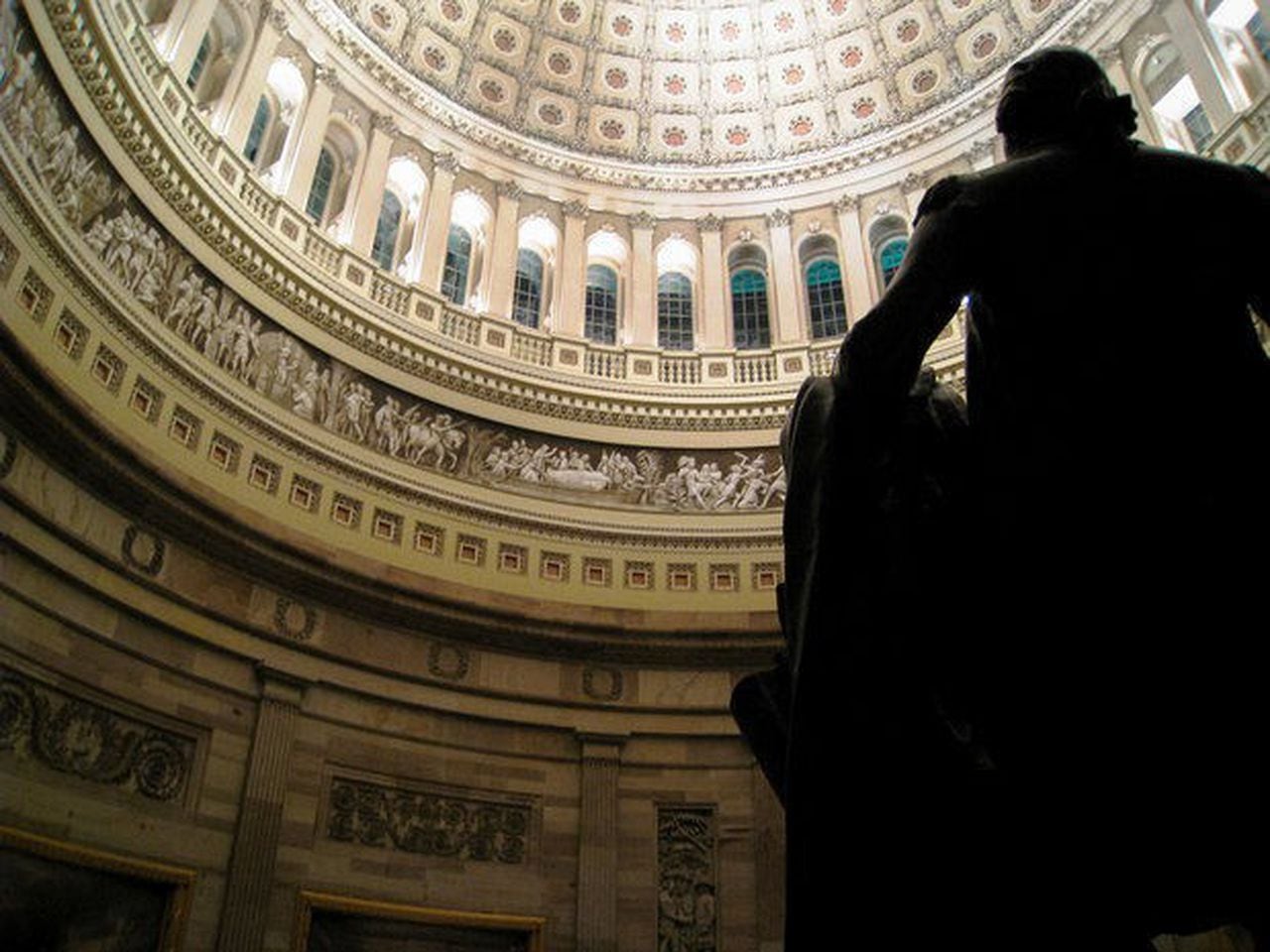
The bedrock of a functioning democracy rests on public trust in its institutions and leaders. In America, this trust has been tested and eroded over the decades, often influenced by political events and the evolving relationship between citizens and their government. This ongoing dynamic significantly impacts the health of the nation’s political discourse and decision-making processes.Public trust in American political institutions and figures has been a fluctuating and complex issue.
Recent years have seen a decline in this trust, driven by various factors, including political polarization, partisan divisions, and perceived failures in governance. Understanding these trends is critical to navigating the challenges facing the nation.
Public Trust in American Political Institutions
Public trust in American political institutions, such as the presidency, Congress, and the judiciary, has shown significant fluctuations over time. These fluctuations are directly tied to specific events and perceived failures of these institutions to address pressing national concerns. While the level of trust can vary significantly between different institutions and across different segments of the population, a consistent trend has been a decline in overall trust over recent decades.
Factors Influencing Public Perception of Political Cynicism
Several factors contribute to the public’s perception of political cynicism. These include the rise of partisan polarization, perceived corruption within political circles, and a sense of political gridlock. Media coverage, often characterized by sensationalism and partisan narratives, can also significantly shape public perception. The increasing availability of information, while beneficial in principle, can also contribute to misinformation and distrust.
The perception of political leaders as detached from the needs and concerns of ordinary citizens further fuels cynicism.
Impact of Scandals and Controversies on Public Trust
Political scandals and controversies have a demonstrably negative impact on public trust. These events, ranging from corruption allegations to policy failures, often expose perceived weaknesses in the system and erode the public’s faith in the integrity of political actors and institutions. The Watergate scandal, for example, profoundly shook public confidence in the presidency, demonstrating the power of such events to reshape public opinion.
Trends in Public Opinion Regarding Political Efficacy and Engagement
Public opinion regarding political efficacy and engagement has evolved in complex ways. While some segments of the population exhibit high levels of political engagement, others express a sense of political powerlessness and disengagement. This disparity is influenced by factors such as socioeconomic status, education levels, and access to information. A consistent trend is the growing concern about the influence of money in politics and the perceived lack of responsiveness to the concerns of ordinary citizens.
Historical Fluctuations in Public Trust in Government
| Year | Event | Trust Level (Estimated) |
|---|---|---|
| 1960 | Early Cold War anxieties | High |
| 1972 | Watergate Scandal | Low |
| 1990s | Economic boom, Clinton presidency | Moderate |
| 2008 | Financial crisis, Obama election | Mixed |
| 2016 | Trump election, political polarization | Low |
| 2020 | COVID-19 pandemic, social unrest | Low |
Note: Trust levels are estimated and based on various surveys and public opinion polls.
Proposed Solutions and Reform
The pervasive cynicism and dysfunction in American politics necessitate a critical examination of potential solutions. Addressing the deep-seated issues requires a multifaceted approach, encompassing reforms to the political process, institutional structures, and public engagement. A commitment to open dialogue, transparency, and a renewed emphasis on civic responsibility is crucial for fostering a more functional and representative political system.A significant challenge lies in bridging the ideological divides that have become increasingly entrenched.
Proposing solutions must consider the diverse perspectives and priorities of the American electorate, while recognizing the shared values and aspirations that unite the nation. Practical strategies must be developed that promote cooperation, compromise, and a willingness to consider alternative viewpoints.
Strategies for Addressing Political Dysfunction
Strategies for addressing political dysfunction often focus on improving the functioning of political institutions and processes, promoting civic engagement, and fostering a more constructive political culture. This includes encouraging respectful dialogue and compromise, promoting transparency and accountability, and empowering citizens to participate more actively in the political process.
Proposed Reforms to the Political Process and Institutions
Numerous proposed reforms aim to enhance the fairness, efficiency, and responsiveness of the political process. These include campaign finance reform, electoral reforms, and changes to the structure of Congress. Each reform presents potential benefits and drawbacks, and their effectiveness depends on implementation and public acceptance.
Comparing and Contrasting Different Approaches to Political Reform
Different approaches to political reform offer various solutions to the issues of political dysfunction. Some emphasize strengthening existing institutions, while others advocate for fundamental restructuring. For instance, some propose campaign finance reforms to limit the influence of special interests, while others suggest electoral reforms to enhance voter representation.
Feasibility and Potential Impact of Proposed Solutions
The feasibility and potential impact of proposed solutions vary considerably. Some reforms, like campaign finance restrictions, have a history of bipartisan support, but their implementation often faces resistance from vested interests. Other reforms, like ranked-choice voting, have shown promise in enhancing voter representation but face challenges in gaining widespread adoption.
Table of Proposed Political Reforms
| Reform | Pros | Cons |
|---|---|---|
| Campaign Finance Reform (e.g., limiting individual and corporate donations) | Reduces influence of special interests, promotes fairness, increases transparency. | May face legal challenges, potentially limit free speech, might not fully address the issue of wealthy donors. |
| Ranked-Choice Voting | Enhances voter representation, encourages broader voter participation, promotes candidates with broader appeal. | Requires significant infrastructure changes, may confuse voters, could lead to strategic voting. |
| Term Limits for Elected Officials | Potentially reduces influence of special interests, encourages fresh perspectives, promotes accountability. | May lead to loss of experienced policymakers, could result in a lack of continuity in government, might not address root causes of dysfunction. |
| Strengthening Independent Agencies | Increases impartiality and expertise in policymaking, improves public trust in government, promotes more reasoned and evidence-based policymaking. | May face political opposition, can lead to bureaucratic delays, may not fully address political partisanship. |
Media Representation and Public Discourse
The American media landscape plays a crucial role in shaping public opinion and understanding of political events. From the nightly news broadcasts to social media feeds, the information we consume profoundly impacts our perspectives on political figures, policies, and ideologies. This influence is undeniable, yet it’s often complex and multifaceted, influenced by a variety of factors. Understanding these dynamics is critical to navigating the often-polarized political climate.The media, in its various forms, acts as a gatekeeper of information, filtering and framing the realities of political life.
This process inevitably introduces biases, which, while unintentional at times, can significantly affect how the public perceives events and individuals. These biases can range from subtle framing choices to overt editorial stances. Understanding these potential biases is essential to developing a more nuanced and critical perspective on the news we consume.
Media Biases and Tendencies
Media outlets, whether traditional news organizations or social media platforms, often exhibit biases that affect their coverage of political issues. These biases can manifest in various ways, including the selection of which stories to cover, the language used to describe events, and the framing of issues. These choices, while often unintentional, can still create an uneven playing field for different perspectives.
Impact of Media Narratives on Public Perception
Media narratives have a powerful influence on public perception. For instance, consistent negative coverage of a particular political figure can contribute to a negative public image, regardless of the validity of the criticisms. Conversely, positive portrayals can enhance public perception. This is particularly evident in campaigns where carefully constructed narratives shape voter perceptions and influence electoral outcomes.
Social Media and Misinformation
Social media has revolutionized political discourse, offering unprecedented opportunities for communication and mobilization. However, it has also become a breeding ground for misinformation and the spread of false or misleading information. The rapid dissemination of content, often lacking verification, can create significant challenges in discerning truth from falsehood. The algorithms used by social media platforms often amplify certain viewpoints, creating echo chambers that reinforce existing biases and limit exposure to diverse perspectives.
Table of Perceived Media Biases
| Outlet | Perceived Bias | Examples |
|---|---|---|
| Fox News | Conservative | Often presents a more favorable view of Republican policies and figures. May emphasize controversial or sensationalist elements of stories. |
| CNN | Liberal | May present a more favorable view of Democratic policies and figures. May highlight instances of alleged Republican misconduct or policy failures. |
| The New York Times | Liberal | Historically, the NYT has been associated with liberal viewpoints, although it strives for balanced reporting. Articles sometimes lean toward critical assessments of conservative policies. |
| The Wall Street Journal | Conservative | Often emphasizes business and economic perspectives, which can influence the way political issues are framed. Generally leans toward conservative viewpoints. |
| Breitbart News | Far-right | Known for its controversial and often provocative content, frequently featuring a highly critical view of liberal and moderate policies. |
Citizen Engagement and Political Participation
The pulse of a healthy democracy beats with the rhythm of citizen engagement. Apathy and disinterest can quickly erode the foundations of representative government, while active participation strengthens the system’s responsiveness to the needs of its constituents. Understanding the levels of engagement, the forces driving it, and the obstacles preventing it is crucial for fostering a more vibrant and responsive political landscape.The current state of American political participation presents a mixed bag.
While elections draw significant turnout, other forms of political engagement, like contacting elected officials or participating in grassroots movements, often see lower rates of participation. This highlights a potential disconnect between formal voting processes and the broader spectrum of civic involvement.
Levels of Citizen Engagement and Participation
Citizen engagement encompasses a wide range of activities, from voting in elections to participating in protests, community organizing, or contacting elected officials. Voting rates in the US, while often high in presidential elections, can be lower in midterm elections and local races. Beyond voting, direct engagement with political processes, such as lobbying, attending town halls, or joining political organizations, is often less prevalent.
These varied forms of participation, each with their own unique characteristics, collectively shape the political climate.
Factors Influencing Citizen Engagement
Several factors significantly influence the level of citizen engagement. Education plays a crucial role, with better-educated individuals often demonstrating higher rates of participation. Socioeconomic status also impacts involvement, with those holding higher incomes and social standing more likely to engage in political activities. Age and generational differences also matter, as younger generations may be less engaged than older ones.
Furthermore, the perceived efficacy of political action, or the belief that one’s efforts can make a difference, can greatly affect participation levels.
Civic Education and Engagement, America politics cynical dysfunctional
Robust civic education programs can significantly enhance political participation. Educating citizens about the workings of government, the importance of civic responsibility, and the processes of political participation equips them with the knowledge and skills necessary to engage effectively. Such education fosters a deeper understanding of the political system and its role in shaping societal outcomes. Increased engagement often translates into a more informed electorate, contributing to a more functional and responsive political system.
Improved knowledge of the political process also encourages active participation in political activities beyond voting, such as contacting elected officials or participating in community organizing.
Barriers to Greater Citizen Engagement
Several factors act as barriers to increased citizen engagement. Apathy, cynicism, and a perceived lack of efficacy in political action can discourage participation. The complexity of the political system and the proliferation of information can be overwhelming, leading to discouragement and detachment. Furthermore, barriers such as time constraints, lack of access to information, and the perceived lack of impact of individual actions can impede broader engagement.
These obstacles highlight the need for strategies to address these concerns and promote greater civic participation.
Methods of Political Participation
| Method | Description | Potential Impact |
|---|---|---|
| Voting in elections | Casting a ballot in elections for various offices | Directly influences the composition of government, selecting representatives |
| Contacting elected officials | Writing letters, emails, or making phone calls to express opinions | Allows individuals to directly voice their concerns and advocate for specific issues |
| Participating in protests or demonstrations | Organizing and participating in public demonstrations to advocate for causes | Can raise public awareness, exert pressure on policymakers, and foster collective action |
| Volunteering for political campaigns | Providing support for candidates or causes through various activities | Contributes to the mobilization of voters, raising funds, and spreading information |
| Joining political organizations or groups | Becoming a member of groups dedicated to specific political agendas | Allows individuals to network, advocate collectively, and gain experience in political activism |
| Civic education | Participating in programs aimed at educating individuals about their rights and responsibilities | Improves political knowledge, fosters civic responsibility, and increases engagement |
Civic education is a powerful tool for increasing political participation. By equipping citizens with the knowledge and understanding needed to engage in the political process, civic education fosters a more informed and engaged citizenry. This in turn leads to a more functional and responsive political system.
Epilogue
In conclusion, the cynical and dysfunctional nature of American politics is a multifaceted problem with deep historical roots. Understanding the interplay of historical context, polarization, institutional structures, and public perception is crucial for any discussion about potential solutions. The future of American democracy depends on a willingness to confront these challenges head-on and to foster a more engaged and informed citizenry.
Detailed FAQs
What are some key historical events that have contributed to political cynicism?
The Watergate scandal, the Vietnam War, and the 2008 financial crisis are just a few examples of events that significantly eroded public trust in government.
How does social media contribute to political polarization?
Social media algorithms often prioritize content that reinforces existing beliefs, leading to echo chambers and the spread of misinformation. This can further divide the public and intensify political disagreements.
What are some potential solutions to address political dysfunction?
Promoting civic education, encouraging bipartisan cooperation, and reforming campaign finance laws are just a few potential solutions. Improving communication and finding common ground are also crucial.
Why is public trust in government so low?
A variety of factors contribute to this, including perceived corruption, political gridlock, and a lack of responsiveness to public needs. The perception of special interests having undue influence also plays a role.

